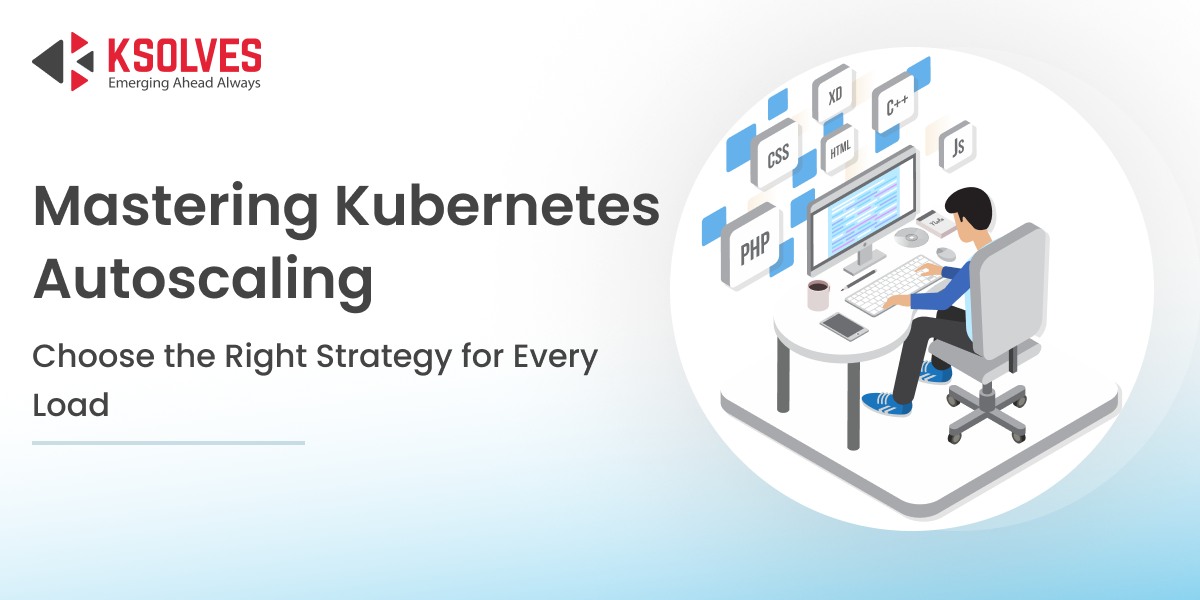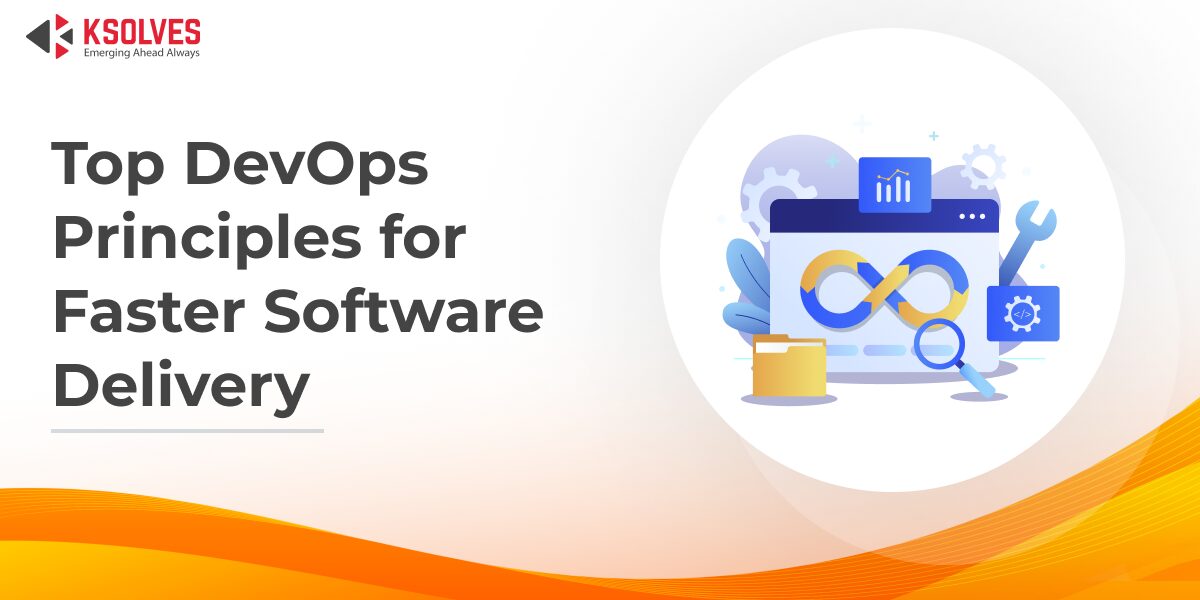Kubernetes Autoscaling: HPA vs. VPA vs. Cluster Autoscaler
DevOps
5 MIN READ
July 9, 2025
![]()

Kubernetes can automatically adjust resources for running applications through autoscaling. In simple terms, autoscaling means increasing or decreasing capacity based on demand. In Kubernetes, this can involve three things: adding or removing pods (horizontal scaling), changing the CPU/memory resources of pods (vertical scaling), or adding/removing nodes in the cluster (infrastructure scaling).
Kubernetes provides three built-in controllers for these tasks: the Horizontal Pod Autoscaler (HPA), Vertical Pod Autoscaler (VPA), and Cluster Autoscaler (CA). Together, they help applications handle traffic spikes and lulls automatically, improving efficiency and cutting costs.
Modern applications often face fluctuating loads. They may see heavy traffic during peak hours and much less at other times. Autoscaling solves this by adjusting resources in real time. For example, if a web service sees a sudden surge in users, the HPA can spin up more pod replicas to handle the load; when traffic drops, it scales them back down.
Similarly, if overall cluster usage is low for a period, the CA can shut down idle nodes to save cloud costs. This ensures that resources match demand. You use extra resources only when needed, and release them when they’re idle.
In this blog, we’ll break down the key differences between HPA, VPA, and Cluster Autoscaler, explore their use cases, and help you decide when and how to use each for optimal performance.
Key Differences Between HPA, VPA and Cluster Autoscaler
Each autoscaler targets a different layer of your Kubernetes stack—pods, resources, or nodes. Choosing the right one depends on your application’s architecture, load pattern, and scaling needs.
Horizontal Pod Autoscaler (HPA)
The Horizontal Pod Autoscaler (HPA) automatically adjusts the number of pod replicas in a Deployment, ReplicaSet, or StatefulSet based on observed metrics. In practice, HPA typically monitors pod CPU or memory usage (and can also use custom application metrics) and scales the number of pods to hit a target utilization.
Key points about HPA:
- Scales Pod Count: HPA changes the number of pod replicas (horizontally scaling the service)
- Based on Metrics: It uses the Kubernetes Metrics Server (or custom metrics) to fetch current CPU/memory usage and compare it to requests or target values
- Use Cases: HPA is ideal for stateless services (like web or API servers) where increased traffic can be met by simply adding more pods
- Limits: HPA only changes pod counts; it doesn’t change how much CPU or memory each pod has. It also requires accurate resource requests to work well
Configuring HPA is straightforward. You define the metric to monitor the target value and the min/max number of pods. Under the hood, the HPA controller in Kubernetes’s control plane periodically checks the metrics and adjusts the replicas field of the Deployment (or other controller). HPA can also use custom metrics via systems like Prometheus.
Vertical Pod Autoscaler (VPA)
The Vertical Pod Autoscaler (VPA) adjusts the CPU and memory requests/limits of each pod (vertical scaling). VPA continuously monitors how much CPU/memory each pod is actually using and recommends (or automatically applies) bigger or smaller resource requests. VPA “right-sizes” pods based on their observed workload.
Key points about VPA:
- Adjusts Pod Resources: VPA updates the CPU/memory requests (and optionally limits) for a container in a pod
- Components: Recommender (gathers usage data), Updater (evicts pods), and Admission Plugin (sets requests on start)
- Use Cases: VPA is useful when it’s hard to predict the right resource size in advance. For example, batch jobs or analytics workloads
- Trade-offs: Changing pod resources requires a restart. In Auto mode, VPA evicts and recreates pods; in Off mode, it only recommends
VPA and HPA can conflict since they both affect pods. Some setups combine HPA for rapid horizontal scaling and VPA for long-term right-sizing.
Cluster Autoscaler (CA)
The Cluster Autoscaler (CA) adjusts the total number of nodes in the Kubernetes cluster. This is especially relevant for cloud environments (AWS, GCP, Azure). CA watches the cluster and adds or removes nodes based on pod scheduling needs and node utilization.
Key points about CA:
- Scales Nodes: CA adds nodes when pods can’t be scheduled and removes underutilized nodes
- Use Cases: Useful for dynamic cluster resizing in the cloud. For example, CI jobs or compute-heavy tasks
- Behavior: When removing a node, CA performs a graceful drain, respecting PodDisruptionBudgets and termination periods
Example: When pods are pending due to insufficient node resources, CA scales up. When nodes are idle and their pods can fit elsewhere, CA drains and removes them.
Comparison of HPA, VPA, and Cluster Autoscaler
Here’s a simple comparison table to understand how HPA, VPA, and Cluster Autoscaler work differently. Each handles scaling at a different level—pod count, pod resources, or node count.
| Feature | HPA | VPA | CA |
| What it scales | Pod replicas | Pod CPU/memory | Node count |
| Trigger | Resource usage or custom metrics | Historical usage patterns | Pod scheduling failure or low node usage |
| Adjustment target | Pod count | Pod requests/limits | VM/node count |
| Use cases | Stateless apps with variable traffic | Batch jobs, ML tasks with changing resource needs | Cloud clusters with changing demand |
| Complementary tools | Often with VPA | Often with HPA | Often with HPA/VPA |
| Pros | Quick scale out/in | Resource efficiency | Cost-efficient cluster resizing |
| Cons | Only scales the pod count | Pod restarts needed | Slower due to provisioning new nodes |
When to Use Each Autoscaler
Kubernetes offers multiple autoscaling mechanisms to meet different performance and cost-efficiency goals. Here’s when to use each of them:
Use HPA (Horizontal Pod Autoscaler)
HPA is best suited for stateless workloads that experience fluctuating demand, like web frontends, APIs, or microservices. It adjusts the number of pod replicas based on real-time metrics such as CPU or memory usage.
Best suited for:
- Applications that can scale out easily without state dependency
- Environments where traffic patterns vary frequently
- Scenarios where quick response to load spikes is essential
Best practices:
- Set clear CPU and memory requests/limits in pod specs
- Use with Kubernetes Metrics Server or custom metrics
- Monitor scaling behavior and tune thresholds as needed
Use VPA (Vertical Pod Autoscaler)
VPA is designed to automatically adjust CPU and memory requests for pods, making it ideal for workloads with unpredictable or evolving resource needs.
Best suited for:
- Stateful applications or batch jobs that tolerate restarts
- Data processing pipelines and backend services
- Scenarios requiring resource right-sizing rather than replica scaling
Best practices:
- Use VPA in recommendation-only mode initially to monitor behavior
- Avoid combining with HPA that uses memory or CPU as scaling metrics
- Great for optimizing resource usage in dev or staging environments
Use CA (Cluster Autoscaler)
Cluster Autoscaler adjusts the number of nodes in the Kubernetes cluster based on pending pods or underutilized nodes. It’s perfect for aligning cloud infrastructure with workload demands.
Best suited for:
- Cloud-based environments (AWS, Azure, GCP) with elastic capacity
- CI/CD workloads or jobs that require short bursts of compute
- Cost-sensitive setups that need to shut down idle resources automatically
Best practices:
- Tag autoscaling node groups appropriately
- Set realistic limits to avoid over-scaling
- Monitor for scale-in protection where required
Combining Autoscalers for Best Results
In most real-world scenarios, using just one autoscaler isn’t enough. A layered approach often delivers the best performance and cost efficiency:
- HPA handles scaling out application replicas during traffic spikes.
- VPA keeps resource allocation per pod optimized over time.
- CA ensures the cluster grows or shrinks as needed based on the overall workload.
By combining all three, you create an intelligent autoscaling system that adapts at both the application and infrastructure levels, keeping your services responsive without overprovisioning resources.
Conclusion
Kubernetes offers three autoscaling mechanisms that work at different layers: HPA for pods, VPA for resources, and CA for nodes. These can be used together to build a responsive, cost-efficient system that automatically scales based on actual usage. DevOps teams benefit from combining these to maintain availability, performance, and optimized resource allocation.
At Ksolves, we help businesses implement intelligent Kubernetes scaling strategies that combine these autoscalers effectively. Whether you’re running microservices at scale or managing large CI/CD workloads, our DevOps consulting experts ensure your infrastructure adapts dynamically, with zero waste and maximum uptime. So, contact us today at sales@ksolves.com.
![]()







Author
Share with